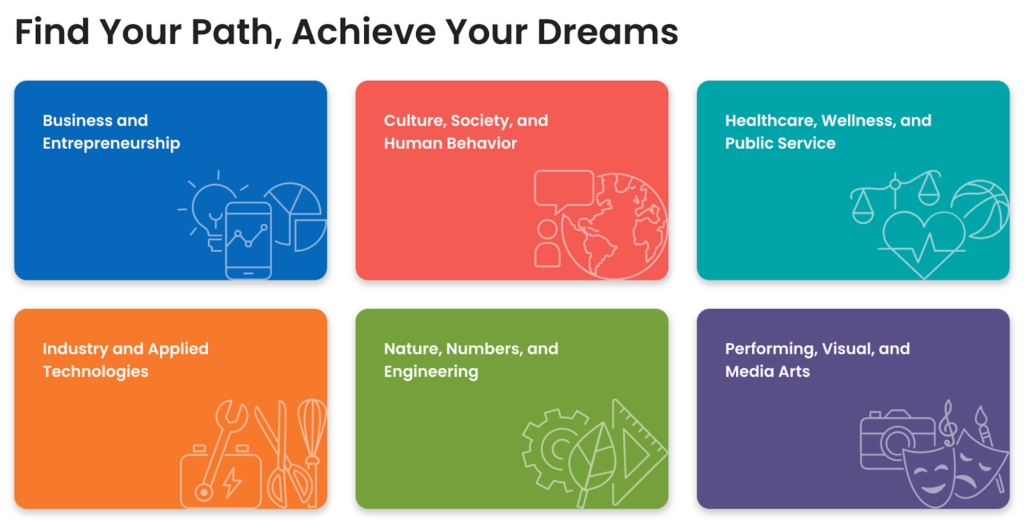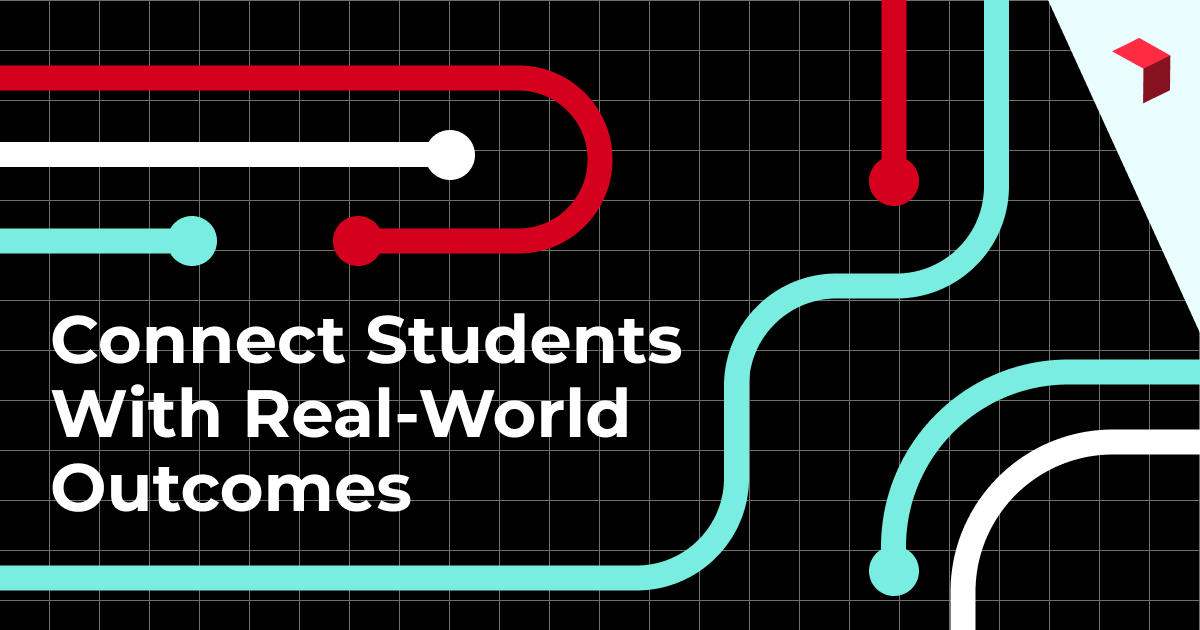Finding the right program at the right college is no easy decision. There are many options for education, from traditional degrees to certificates to online learning. It can be confusing for students to see how these programs fit with their career goals. That’s where academic pathways come in.
Colleges and universities are adopting academic pathways as a tool to streamline the college search process. Simply put, pathways illustrate a clear route connecting a school’s academic offerings to a student’s career objectives.
While the idea of pathways is relatively simple, implementing them is a large lift that involves faculty and staff across your school. If you’re ready to explore this approach, we can help you understand pathways so you can decide how best to use them on your own higher ed website.
Academic pathways and user search habits
Before you can truly understand what pathways are, you first must understand the reason for using this strategy. As with many other strategies, the shift follows the lead of the user and their search patterns.
In the traditional search method, students search for programs they’re interested in without knowing their future career. For example, they may search for “math programs,” with no specific career goal in mind.
As they become involved with their program and explore different options, they decide on a career path that aligns with their current program. For example, electrical engineering.
Pathways work in the opposite direction: the student starts with the career they want and tries to find a program that will get them there.
For example, a student would already know they want to become an electrical engineer, and would therefore search for “electrical engineering degree.” They would then prioritize programs that explicitly outline pathways leading to that career outcome.
Why is this shift happening? Because students are afraid of investing in a program that doesn’t deliver.
With concerns like student loan debt and career outcomes weighing heavily on users’ minds, today’s students want to see what their return on investment (ROI) will be before choosing a school. They aim to graduate with minimal debt and a successful career in the area that interests them.
Understanding pathways
The simplest form of pathways fills in the program blanks between where a student is and their career goals. As opposed to just providing a list of program options, pathways group programs together and guide prospective students from start to finish—from enrollment to career.
This helps prospective students understand the different avenues they can take to reach their career goals, as well as how different degrees and certificates build upon one another.
Let’s use this Business and Entrepreneurship pathway from Santa Barbara City College (SBCC) as an example. And let’s say the prospective student wants to become an accountant, but also wants to start working quickly.

Source: Santa Barbara City College

Source: Santa Barbara City College
By clicking through the program options displayed in this pathway, the student would find that they could kickstart their career with the Accounting Assistant/Bookkeeper Level I Certificate, qualifying them for entry-level roles in less than a year.
They could then pursue an associate degree in accounting and, if they wanted, eventually transfer to earn a bachelor’s degree. They would also be able to recognize other certificate opportunities they could pursue along the way to broaden their skillset.
Going deeper with pathways
While displaying program options is the most basic use of pathways, some schools go even further. To provide a truly guided and holistic experience, they include even more information, like a sample course map, cost of tuition, career details, and school support systems, such as tutoring and counseling, that will help the student on their academic journey.
Deeper pathways show the student that between their education, career options, and institutional support, there will be a positive—and fast— ROI on their educational investment.
Let’s go back to the SBCC Business and Entrepreneurship pathway. When you click on a program, it not only shows the basic program information, but also gives the prospective student a sample course plan that shows them what the road to graduation looks like.
This plan connects classes to prerequisite courses, showing how they build. It also shows when it’s time to take extra steps outside of coursework—like meeting with an academic counselor or applying for graduation—providing that ultimate guided experience.

Source: Santa Barbara City College
Seeing this pathway built out—from program options to support systems—empowers students to make informed decisions about their education and career before they even apply to schools. It also breaks down barriers, particularly for underrepresented students, such as first-generation students, by eliminating academic jargon and simplifying the process.
Implementing academic pathways on your higher ed site
Using pathways on your higher education site can be a great way to help drive enrollment if it’s implemented effectively. Effective pathways use:
- Clear structure: Your structure should clearly define each pathway by career goal, interest, etc. Poorly defined pathways can make it difficult for students to understand their options and make informed decisions.
- Customized content: Developing pathway-specific content, like detailed course descriptions and alumni stories, guarantees relevance for users. Ignoring this step may lead to a one-size-fits-all approach which feels generic, lacks authenticity, and fails to engage effectively.
- Current information: Make sure the information you’re providing—program details, course requirements, career opportunities—is not only relevant, but also up to date. Outdated information can hurt the decision-making process and mislead students.
- User-friendly navigation: Users should be able to explore the pathways easily through your navigation. Confusing navigation can cause frustration and end the user’s journey before they find the information they seek.
Getting started with pathways with iFactory
Academic pathways serve as a navigational guide for students, connecting program offerings to tangible career outcomes. Driven by users’ search for career goals rather than programs, this organization strategy allows students to explore all the ways they can achieve their goals.
Deeper pathways display more comprehensive information such as university support, course maps, and career data to create a holistic, guided experience. However, integrating academic pathways into your higher education website is a significant time investment.
Effective implementation hinges on factors like customized content and clear organization. For help getting started with the pathways strategy, reach out to our team at iFactory.


